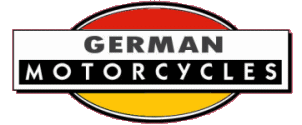


Roder was involved with the Ziro, EMAG and Ermag marques. Later he designed the NSU Fox, and the Ultramax valve train of the Max, Superfox and Maxi.
Born in 1896 in Nuremburg, Roder built his first engine when only 16 years old. Two years later he received his first patent - he had designed a 1500cc aero engine which functioned as either 2 or 4-stroke and delivered 32hp, an extraordinary figure at the time. He took out over 100 patents during his career.
After service in the military during WWI he worked as a design engineer before meeting a fellow motorcycle enthusiast, Karl Zirkel. Together they formed a company building Ziro motorcycles, which failed in 1923 due to hyperinflation. That same year the two men formed a new venture, EMAG, which in 1924 was renamed to ERMAG. The machines did very well in competition, and orders outstripped production capabilities.
Roder and Zirkel left ERMAG in 1928. Roder took up a position with Zundapp in the design department, to be joined by Richard Kürchen in 1930 who came in as chief designer. Roder left Zundapp in 1936 and joined NSU as deputy to Walter Moore. Roder is credited with the OHC supercharged twins developed during that period. Moore left when the war came, Roder took his place, and Norbert Riedel joined the team.
After the war Roder, who was under restrictions imposed by the allies, designed the immensely popular FM 38 bicycle engine for Victoria. In 1947 the restrictions were relaxed and he returned to NSU as chief designer. There his creations included the 100cc Fox, the 200cc Lux and the OHC Max. His Prima scooter appeared in 1958, and was followed by the 600cc twin-cylinder Prinz engine. He and Ewald Praxl also developed the Rennfox 125 and the Rennmax 250.
Albert Roder retired from NSU in 1961, and died in Heilbronn in 1970, aged 74.
A detailed biography in German is available here: Roder at meisterdinger.de
Sources: meisterdinger.de, et al.